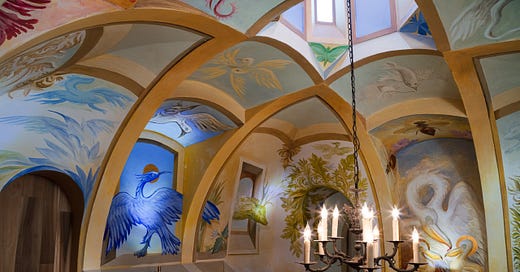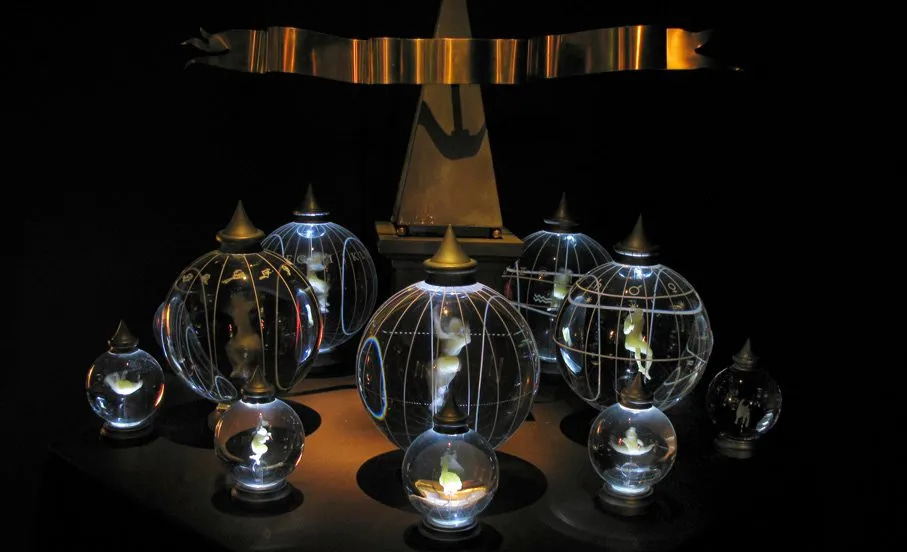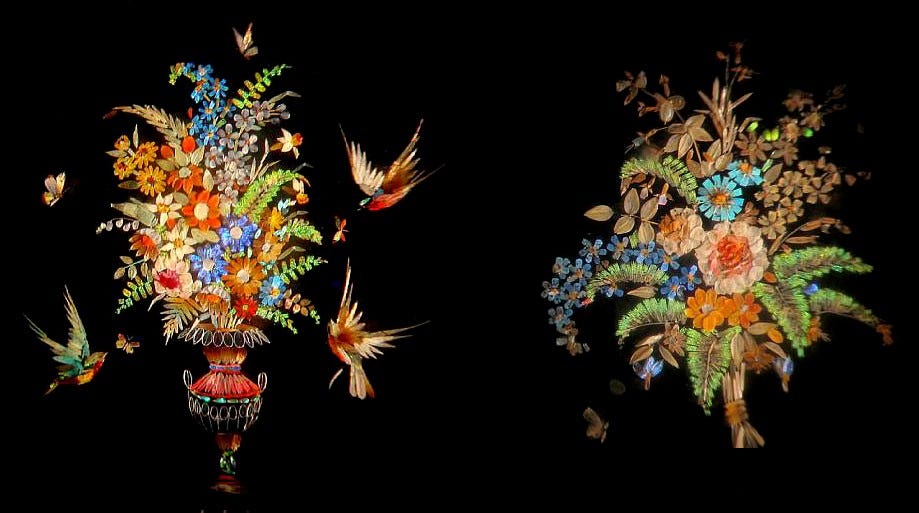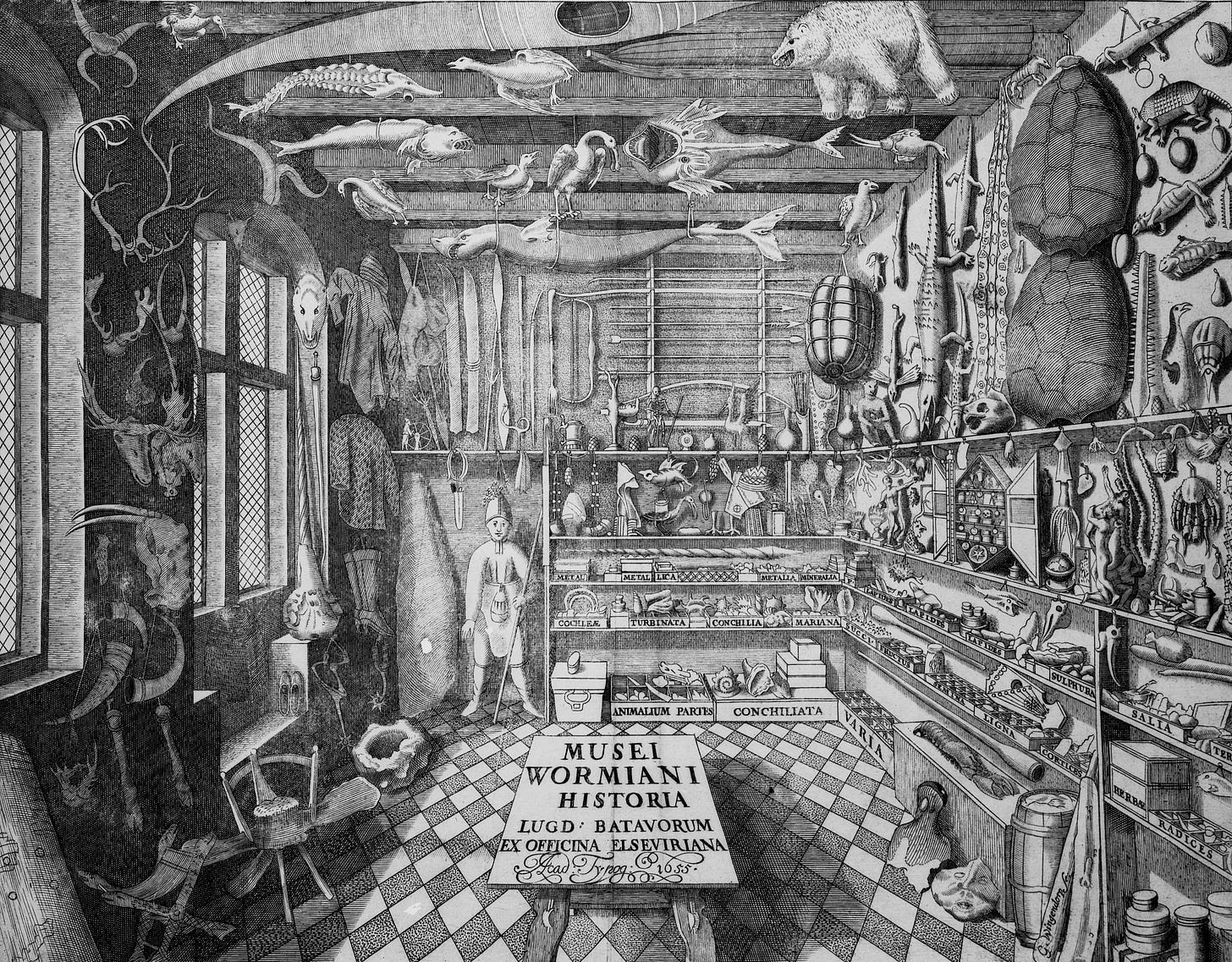Hello again! It’s been a minute, not because I lost any interest in this Substack, but because I have simply been very busy. It’s hard to believe that other things besides bugs occupy my time, but that’s the sad truth of the world we live in. I also don’t want this blog, which is fun recreation for me (and hopefully for you as well) to become a burden, so I save the writing of these posts for when I have something I’m actually excited about.
Last month, I visited a Bugstack subscriber who is also my boyfriend in Los Angeles, and one of the must-do’s on our list was the Museum of Jurassic Technology. I don’t remember where I had first heard about this place, or from whom, but the way it was described to me—or, rather, not described—was enough for me to know that it would probably be something I’d be into. In short, I was right. It’s one of if not the coolest museum I have ever been to, though the word “museum” is a bit of a stretch for what this place really is. Or is it a stretch? I still haven’t figured that out!
The museum itself sits in the middle of a strip of storefronts along Venice Boulevard in what people who live in LA know as “Palms,” on the “Westside,” whatever any of that means. I would be hard-pressed to tell you on what side of the city it is, or where it is relative to any other place. I just get into Ubers and tell them to take me places. The facade is easy to miss: It looks like a lawyer’s office, or maybe a funeral home. If you go inside on a sunny day, which we did, you won’t be able to see anything at first before your eyes adjust to the general gloom.
You enter into a foyer which is also a gift shop, and the receptionist takes your tickets and tells you no photography is allowed, and that they are serving tea and cookies in the Tea Room. You can take any track you want through the museum, and we started in a section full of “micromosaics,” microscopic images of flowers and birds created from butterfly scales and diatom exoskeletons; which led into an exhibit on trailer homes complete with dimly lit dioramas; which led into a small chapel with frescoes of medieval beasts on the walls, which led into an exhibit on “vulgar remedies,” folk medicine and superstitions like sticking a pin into the post of a gate a corpse has passed through, or whispering family gossip to the local bees.
That’s maybe half of the first floor, and I’ll try not to describe too much more of the museum, since I think the whole point of the thing is to experience it for yourself. Elsewhere, there’s a hall filled with dice donated by the magician Ricky Jay, an exhibit on string art that reminded me of the Knot Store from Portlandia, a room of portraits of the dogs used in the Soviet space program. The Tula Tea Room, which is situated on the roof and open to the outside, is a reproduction of the study used by Tsar Nicholas II in the Winter Palace in St. Petersburg, complete with nesting doves. Very little of it has anything to do with anything else, except that it was either donated by a collector of eccentric interests, or itself collected by the eccentric who started the museum in the first place.
In 1995, the writer Lawrence Weschler attempted to get to the bottom of this, and his conversations with the museum’s founder, David Wilson, over many visits to the museum itself, were collected in the book Mr. Wilson’s Cabinet of Wonder: Pronged Ants, Horned Humans, Mice on Toast, and Other Marvels of Jurassic Technology, which I am currently reading. It’s a short book, but full of information, real and unreal. Wilson was inspired by the cabinets of curiosities of the Renaissance, in which their curators would amass vast collections of stuff that couldn’t be categorized—books, animals, insects, plants, bones, preserved body parts, ancient artifacts, fossils, rocks, artwork. It was all thrown together into one space, to be examined at leisure, defying explanation. The German word for such rooms was Wunderkammer, or wonder room.
In his book, Weschler seems both perplexed and charmed by the ways in which the Museum of Jurassic Technology pushes aside the pure scientific truth we’ve come to expect from modern museums in favor of mythmaking and storytelling. Some of the descriptions of various items are completely made up, and some of them are completely factual. You can either choose to take it all as fact or fancy, or a mixture of both. By the time you leave, all you’ll have to go on is your semi-reliable memory.
“The museum affords this marvelous field for projection and transference,” Marcia Tucker, former director of the New Museum in New York, told Weschler. She had met Wilson at a curators’ conference in Germany where he had completely confounded his audience. “It’s like a museum, a critique of museums, and a celebration of museums—all rolled into one.”
One of the first exhibits you’ll find past the entryway is a reproduction of Noah’s Ark in miniature: a long, rectangular slab of boat, completely different from the rounded galleon most of us would imagine, with a cross section of the hollow inside where you can see all the tiny individual stables where the animals would have been kept. The Ark would have been the world’s first curated collection, the first ever museum of natural history, gathering together all of the world’s most precious things under one roof. The Museum of Jurassic Technology is itself an ark in miniature, full of things to look at, wonder about, and remember.
IN BUG NEWS:
RFK Jr. had a worm in his brain, but he says it will not impact his ability to run the country if elected in November. Sounds fine to me!









Sounds like my kind of place. Good to have bugstack back.